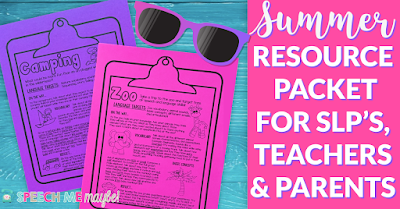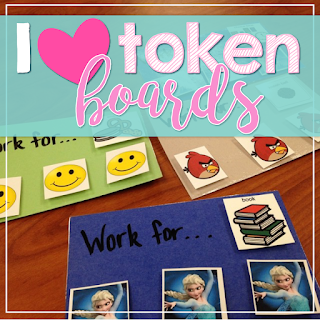Have you ever had a student that just didn’t seem to qualify on any standardized measure you gave him/her? When I was a brand new SLP, I stuck to those standardized scores like they were the end all be all.
Learn from my mistake. Standardized measures do not always grasp or show the whole picture of a student and sometimes, they don’t even come close. For those students with what some call, “high-functioning autism” we have to dig a little deeper and our assessment looks a little different than what we usually do. According to the new DSM-5, there are three levels of severity when we are looking at ASD.
Level 1: In a nutshell, these are our students with severe communication deficits whom are typically non-verbal.
Level 2: These are our students whom posses substantial deficits in the area of communication. They make speak in simple phrases or sentences and have difficulty with basic language concepts.
Level 3: These are our students who need social language supports. They have trouble making friends, understanding conversation rules, and many other social pragmatic concepts.
I want to talk about our students that fall in that Level 3 area. These students typically had Asperger’s Syndrome. Now, we call it,
Social Communication Disorder (SCD). Personally, I think that is a better reflection of the struggles they may face.
These students may have difficulty with:
-Eye referencing (moving their eyes for communicative purposes, joint attention skills)
-Reading and interpreting those non-verbal social cues
-Predicting what other will do next in a situation (vital skill in the classroom setting)
-Identifying what others might think or feel
-Knowing whose turn it is to talk
-Talking to much or too little (interrupting, off-topic comments, one-sided conversations)
-Understanding when to respond
-Lack of empathy
-Failing to demonstrate salient emotions
Assessment
Where do we go from here? There really isn’t an objective standardized measure to assess these specific areas out there although, there are a few that are a great supplement during assessments. Here are a few suggestions when you are going through an evaluation period.
1)
Social Competency Interviews: These interviews should be with a VARIETY of people including: parents or family members, teachers, friends, and the student. Check out my social competency questionnaire
HERE.
2)
Observation: I typically try to observe in 2-3 different settings with different people. Check out this great
observation rating form, HERE. Some things to consider while completing an observation are:
a. Who are they with? (Familiar or unfamiliar people)
b. What is the context? (class, P.E., lunch, small group, large group)
c. Preferred or non-preferred activity?
3)
Collect a language sample. Observe a VERBAL interaction and attempt to take a language sample. Language samples can tell us SO much information about the student. Look for those unwritten rules of conversation.
If you are looking for an Informal SCD Measure, check out
this resource!
Social Communication Interventions
You’ve collected all your data, made your decision, and believe that this student may benefit from skilled speech and language services in the areas of pragmatics. Some things to think about before you begin treatment…
1) Individual or group setting?
2) Contrived or naturalistic learning opportunities?
3) Incidental or direct treatment?
4) Setting? In the home or school?
5) Peers? Same-age? Typical or atypical?
6) Amount of time?
*No matter what you choose, it should be individualized for each student.
There are a huge variety of social skills curricula out there and there is no right or wrong way to go about it. Some things that I have found effective when conducing social groups are…
1)
Social Stories by Carol Grey
2) Counseling techniques
3)
Social Behavior Mapping by Michelle Garcia-Winner
4)
Video Modeling
5)
Zones of Regulation by Leah Kuypers
An important item to consider when treating students with SCD is
anxiety. It is not uncommon for our students to have co-existing anxiety disorders. These may decrease academic and social performance and if left untreated, we may never see their true potential.
I hope this post gives you some kind of idea on where to start when you are assessing and treating individuals with social communication disorders. Please comment below with some intervention techniques that have worked in your therapy room!






















